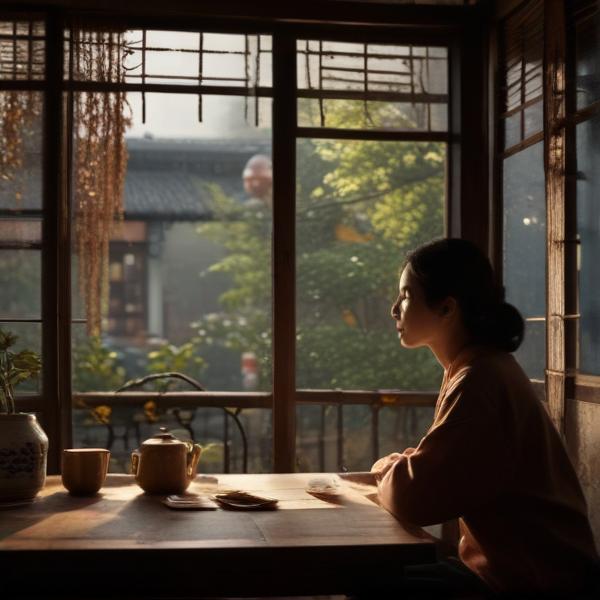基本信息 (Basic Information)
含义与用法 (Meanings & Usage)
中文核心释义 (Core Chinese Meaning): 游戏、玩耍、表演、戏剧
英文核心释义 (Core English Meaning): play, game, drama, theatrical performance
象形意义 / 为何这么写 (Pictographic Meaning / Writing Rationale)
文言文释义 (Classical Chinese Meaning)
与现代意义相近,古代多指游戏、玩耍,后来逐步引申为表演和戏剧。Similar to modern meaning; in ancient times it mainly meant playing or frolicking, later extending to performance and drama.
深入学习 (In-depth Study)
字源故事 (Origin Story)
字形演变 (Character Evolution)
常用词语和例句 (Common Words & Examples)
戏剧 (drama; play; theater)
他对戏剧表演非常感兴趣。
Eng: He is very interested in drama performance.
游戏 (game; play)
孩子们在公园里开心地玩游戏。
Eng: The children are happily playing games in the park.
恶作戏 (prank; practical joke)
这只是一次无害的恶作戏。
Eng: This is just a harmless prank.
相关成语 (Related Idioms)
儿戏
Meaning: child's play; something unserious
多语言翻译 (核心释义) (Translations (Core Meaning))
- French: jeu, pièce (théâtre)
- German: Spiel, Theaterstück
- Spanish: juego, drama, obra de teatro
- Italian: gioco, spettacolo teatrale
- Portuguese: jogo, peça teatral
- Russian: игра, спектакль
- Arabic: لعبة، مسرحية
- Persian: بازی، نمایش
- Dutch: spel, toneelstuk
- Polish: gra, przedstawienie teatralne
- Vietnamese: trò chơi, kịch, vở kịch
- Ukrainian: гра, театральна вистава
视频学习资源 (Video Learning Resources)
通过以下链接在热门视频网站搜索 "戏" 的更多讲解:
Search for more explanations of "戏" on popular video sites:
- 在 Bilibili.com 搜索 "戏 字源 说文解字" (Search on Bilibili)
- 在 YouTube.com 搜索 "戏 character origin etymology" (Search on YouTube)
网络参考 (Web References for "戏") ()
网络内容摘要 (Web Content Summary):
“戏”的核心含义是“表演”或“游戏”,在现代汉语中通常指戏剧、演出或玩耍。The core meaning of “戏” (xì) is "performance" or "play." In modern Chinese, it usually refers to drama, performance, or playfulness.
从字形来看,“戏”是古代“戲”的简化字。原字“戲”由表示“作战”或“游戏”的字部组成,表现了动作性和娱乐性。这一简化字已经沿用了一千多年。The character “戏” is a simplified form of the traditional “戲.” The original components relate to “fighting” or “playing” actions, emphasizing movement and entertainment. The simplified version has been in use for over a thousand years.
常见的相关词汇有“戏剧”(drama)、“游戏”(game)、“小戏”(short play)。成语如“玩世不恭”(behaving cynical or unserious about the world)中也包含“戏”字。Common related words include “戏剧” (xìjù, drama), “游戏” (yóuxì, game), and “小戏” (xiǎoxì, short play). Idioms such as “玩世不恭” (to take life as a joke) also use “戏.”
- 注意易混: “戏”有时容易与“戏弄”(to tease/trick)混淆,需结合语境理解。
- Note: “戏” can sometimes be confused with “戏弄” (to tease or trick); context is important to understand the exact meaning.
关于汉字“戏”的甲骨文象形本义,尚有待进一步的研究与破译,目前大量详细资料主要收录在专业字典或学术著作中,并未广泛公开。The pictographic oracle bone origin of “戏” is still under research and is documented mainly in specialized dictionaries or academic works, not widely accessible online.
汉字"戏"的起源、演变过程-汉字字源辞典
汉字字源辞典收录3519条汉字词条,基本涵盖了常见汉字的字源解析,是汉字研究的必备工具。 ... 并作为古代的简化字使用了一千多年。今简化字统一写作 "戏" 。 ...
【戏,戲】的甲骨文金文篆文字形演变含义 - 甲骨文研究网 甲骨文密码字典 在线甲骨文字典研究 - 甲骨文研究网 甲骨文密码字典 在线甲骨文字典 ...
Hot Tags: 本网破译的所有甲骨文象形本义全部收录在《多功能汉字甲骨文破译字典》一书中,破解的古诗、竹简等古文作品收录在《新编甲骨文破译案例解析》一书中。 因时间、精力有限,破译的甲骨文象形本义只有少数上传到网站上,对甲骨文感兴趣、想全面了解者可参阅本网所著的这一套 ...
更多图片 (戏 More Images) ()
